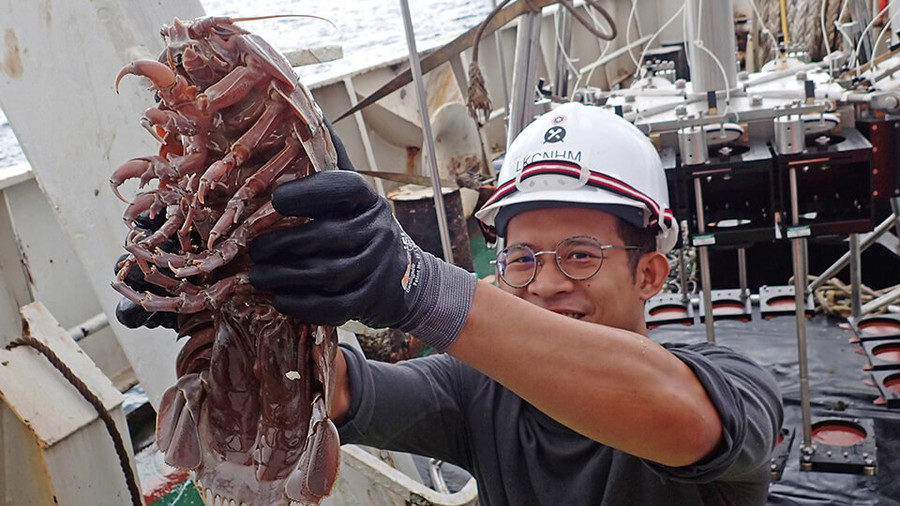Among the extraordinary treasure trove of new creatures is a spider crab with fuzzy spines and blood-red eyes, a small wood-dwelling sea star, and a giant cockroach almost a foot (30 centimeters) long.
The monstrous-looking ocean dwellers were identified during the first such scientific expedition to the southern coast of West Java, Indonesia.
Around 12,000 specimens belonging to 800 species were collected during the two-week mission, while over a dozen new breeds of hermit crabs, prawns, lobsters, and crabs were discovered.
The South Java Deep Sea Expedition was carried out by a 31-member team from the National University of Singapore (NUS) and the Indonesian Institute of Sciences. Samples of crustaceans were collected from 63 sites, at depths averaging 800 meters, with the deepest depth sampled at 2,100 meters.

A "supergiant" cockroach species was also among the discoveries, marking the first time such a creature has been found in Indonesia. Researchers believe this could be an entirely new species, as it appears to be quite different to other described species of its kind.
The expedition was not without challenges, however, as the team had to deal with rough seas and inaccurate maps which led to equipment damage as the depths were not marked correctly.
The team also noted the high level of plastic pollution in the sea, revealing that one of the crabs was in fact found in discarded underwear. The project's focus now turns to studying the collected samples - a task that could take up to two years.





And then, of course, I've always awoken to find one of our two inch monsters (which fly!) hath landed on my theretofore sleepily closed eyelid.
Everyone in Florida has horror stories - nonetheless true - of our 'American Cockroaches.' Anyone here who claims there are none in their home are either lying . . . or, will shortly die of cancer.
R.C.